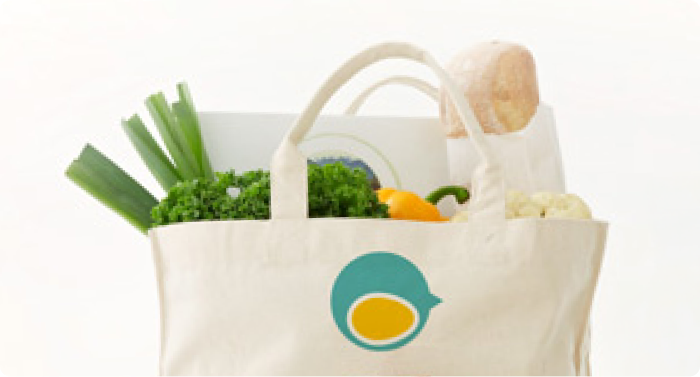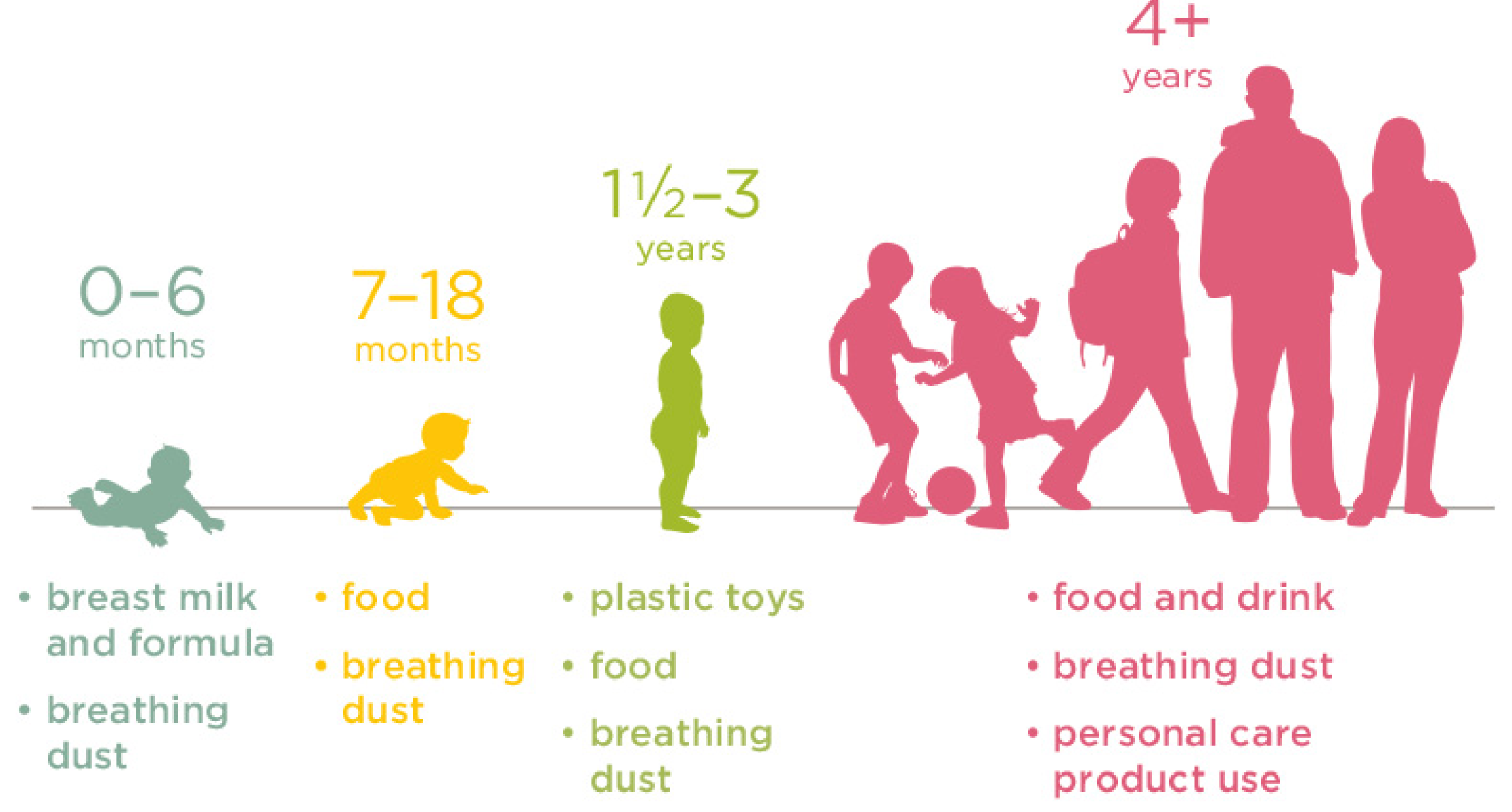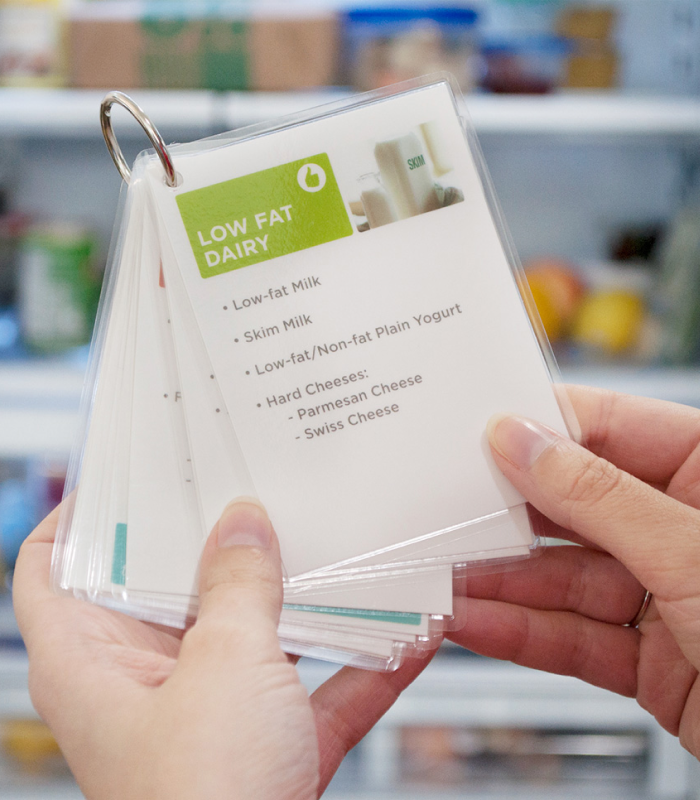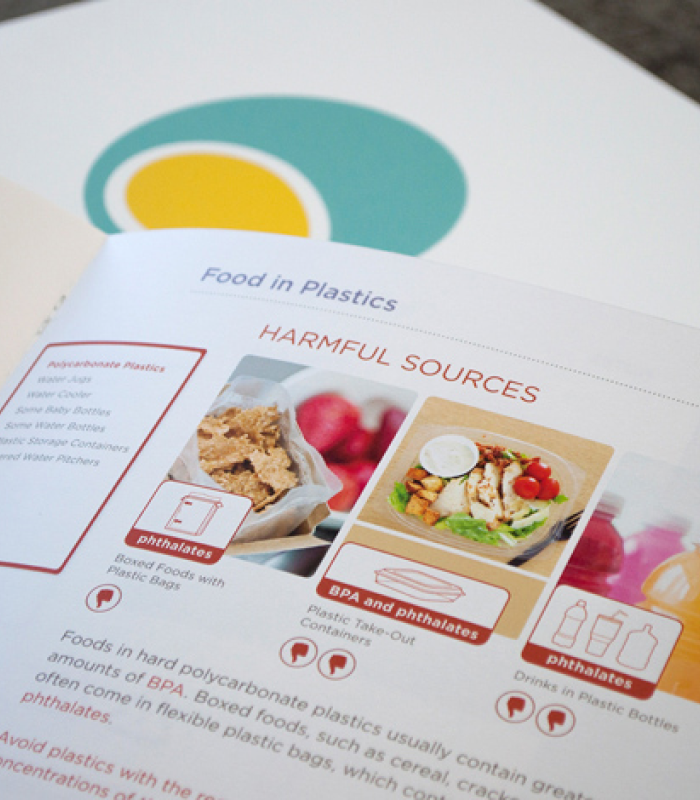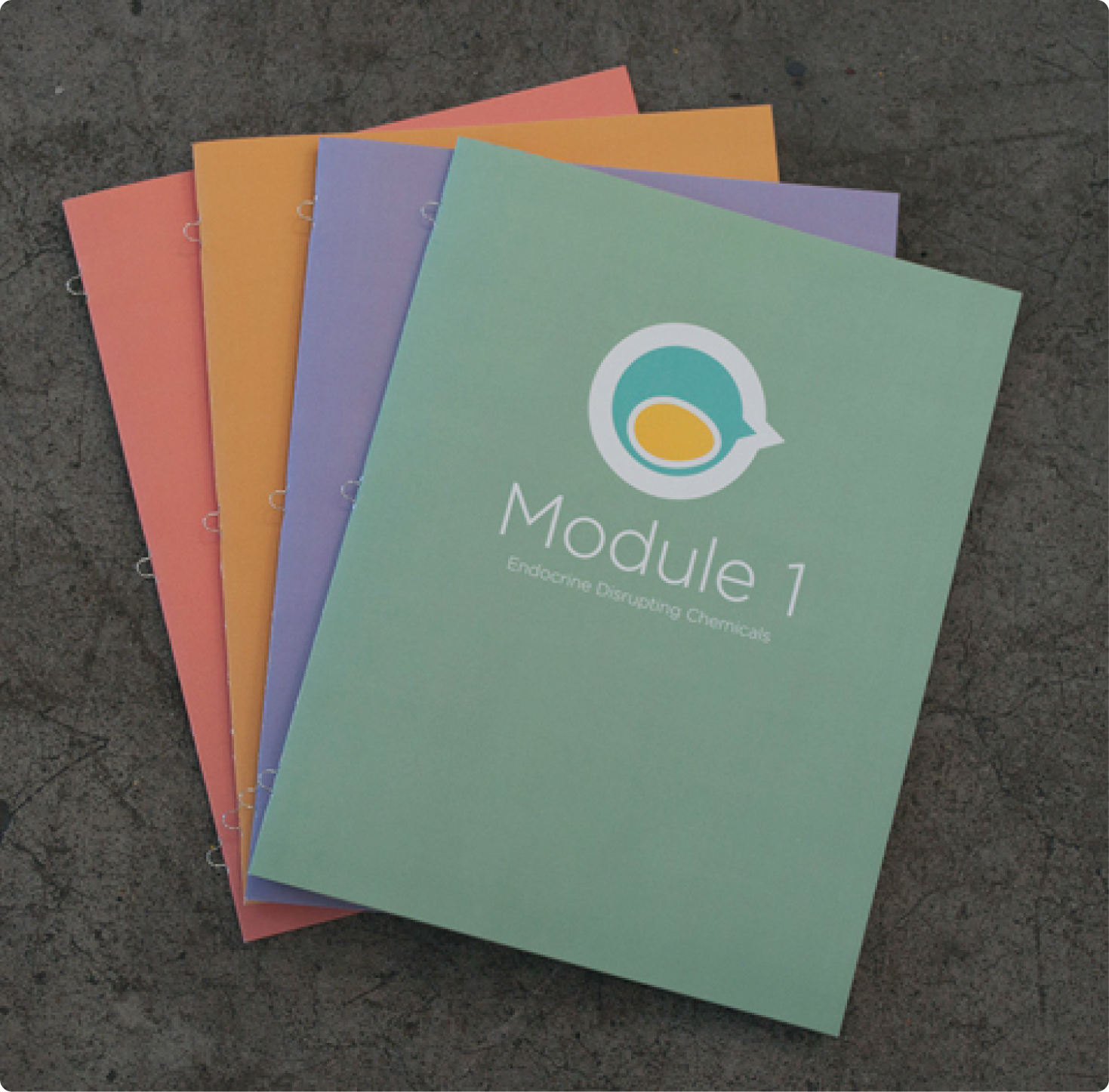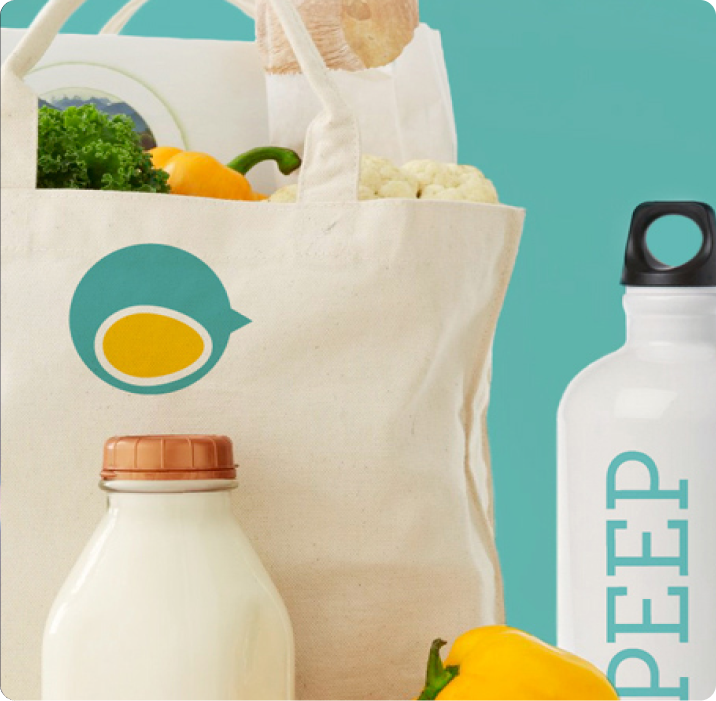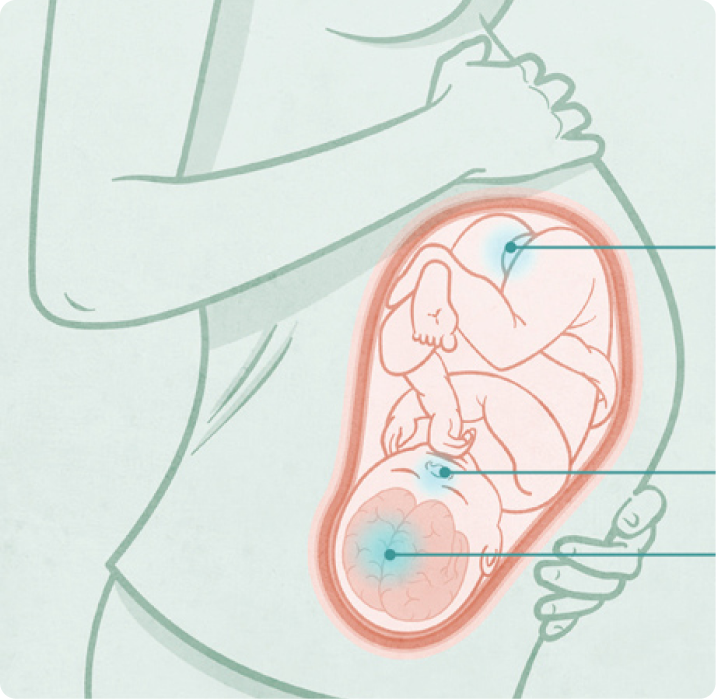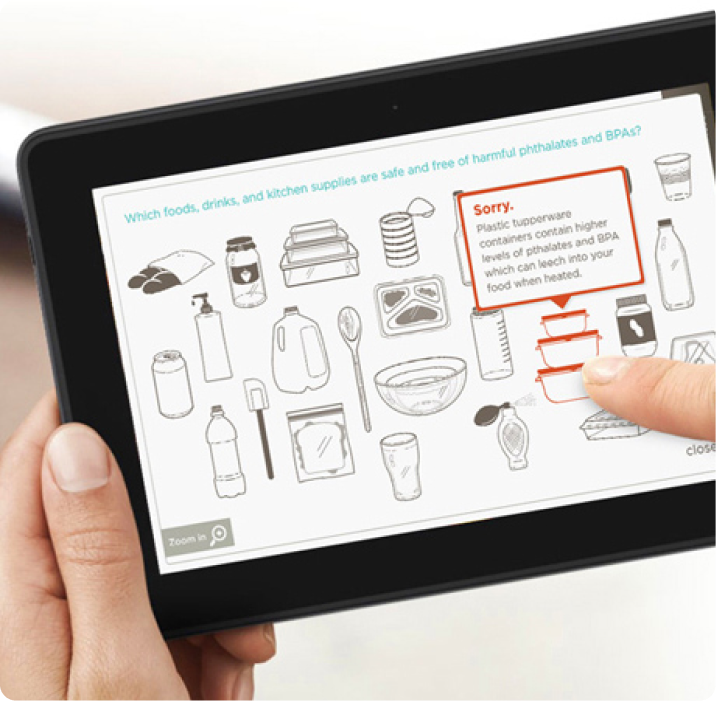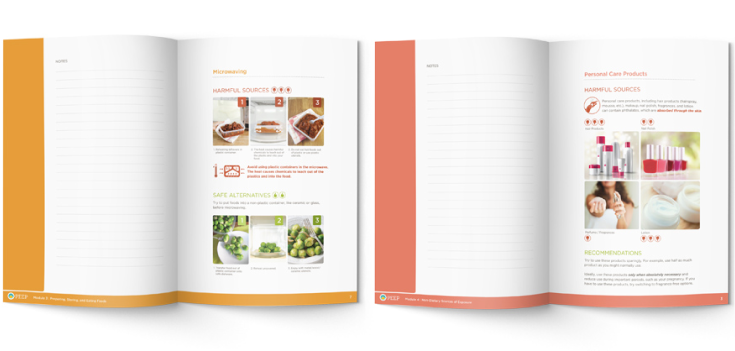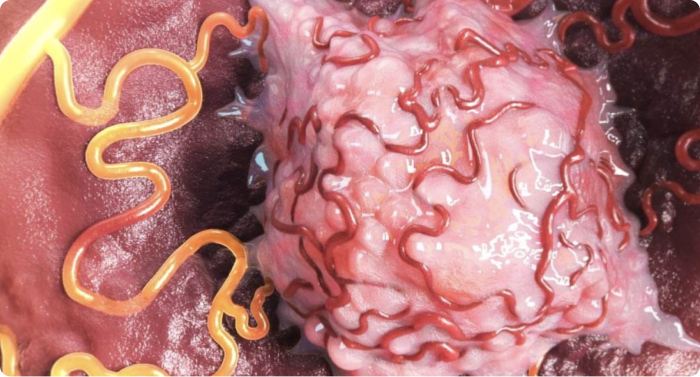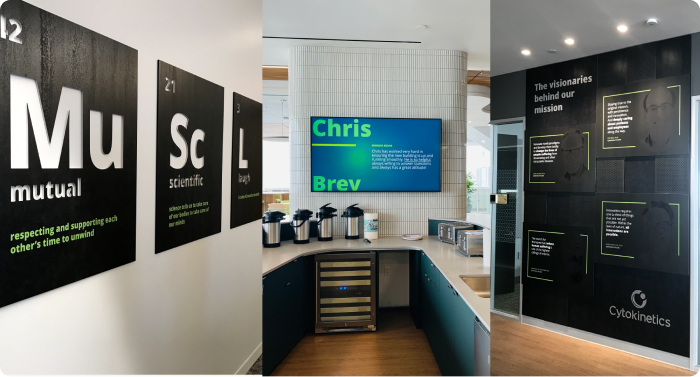A toolkit and training sessions to highlight health risks
The goal of this clinical study was to support mothers during their pregnancy through education about environmental health risks, allow them to actively experience changes in their health, and learn how to make long-term behavior changes.
For the field research and intervention materials, we developed a Kindle app, analog (paper) educational modules, training videos, logo and supplemental resources.
The app and educational modules allowed users to learn:
- About environmental exposures in their home
- How to make healthy choices during their shopping trips
- How to cook, prepare, serve and store food
- How to make an impact in their child’s life
Both modalities allowed broader use in low-, middle- and high-income families and were designed to be tested in immigrant communities that could use the information and make measurable improvements in their BPA exposures.
Some core parameters that were involved and used in our developmental processes were low education levels (3rd grade reading), ethnographic profiling (understanding the immigrant mindset of health habits), image and object recognition, color-coding principles, iconography and symbol usage, and video-based storytelling teaching methodologies.
The pilot study was conducted with immigrant, English as a second language, low education pregnant mothers and was conducted as in-home training sessions, cooking and fresh food education, and round robin community intervention discussions.
The end goal was to be able to measure learning comprehension through paper materials, digital technologies, and hands-on training. Validation was measured through urine samples, quizzes, and community impact surveys.

